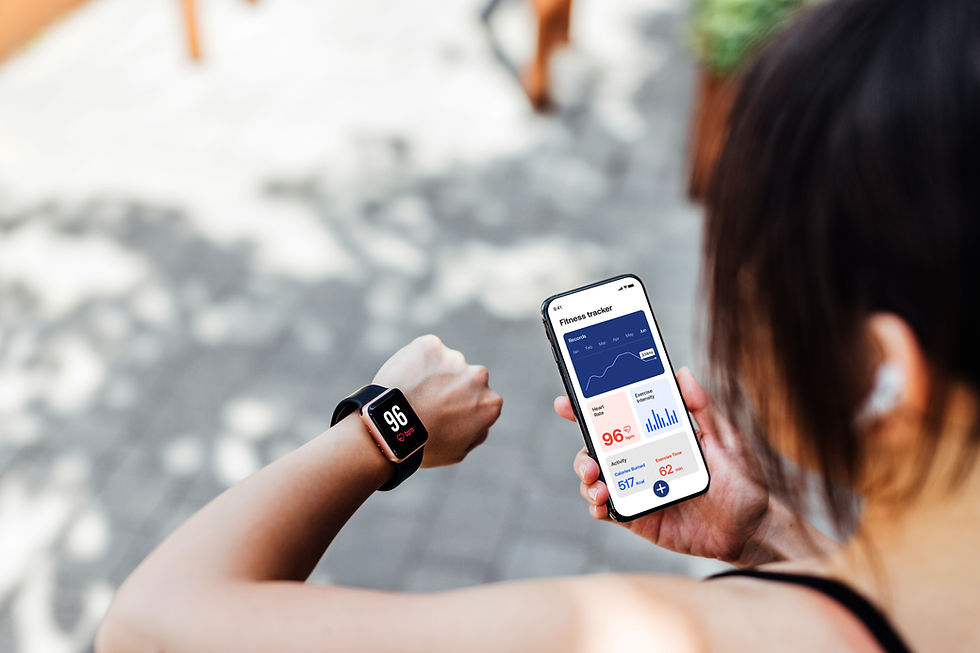Harnessing Heart Rate Variability for Enhanced Athletic Performance
- Brandon Puterbaugh
- Aug 2, 2024
- 2 min read
In the realm of athletic training and peak performance, understanding and managing the nuances of an athlete's physiological state is key. One such nuance, heart rate variability (HRV), has emerged as a powerful tool in gauging stress levels and the autonomic nervous system's (ANS) response to stress. This is pivotal as HRV fluctuations are closely linked with training adaptations, readiness, and even increases in maximal oxygen consumption, which is a marker of improved aerobic capacity (Georgiou et al., 2018; Board et al., 2016; Sekiguchi et al., 2021).

Optimizing Performance: The Smart Use of Wearable Tech in Sports
Despite the surge in wearable technology's popularity over the last few years, it's critical to approach these tools with a practical mindset. A study by Flatt, A. A., & Esco, M. R. (2015) underscores this, revealing improved outcomes when athletes reduced their HRV monitoring from seven to five days a week. This suggests that while wearable tech can be a boon for optimizing health and performance, its effectiveness hinges on judicious use rather than over-reliance.
Specifically, HRV monitoring stands out for its applicability not just in traditional fields studied, such as soccer, but across a spectrum of sports including swimming, hockey, and lacrosse. This wide applicability underscores its value as a measure of training-induced stress, which, in turn, influences both performance and recovery (Javaloyes et al., 2020; Board et al., 2016; Buchheit et al., 2010).
A Practical HRV Monitoring Tool Comparable to ECG Devices
Among the tools available for HRV monitoring, Polar heart rate monitors (HRMs) have proven to be particularly effective, yielding results comparable to those of the more sophisticated electrocardiogram (ECG) devices (Board et al., 2016). This makes them a practical, accessible option for athletes and coaches alike, facilitating the seamless integration of HRV monitoring into regular training regimens.
However, it's important to mention that HRV monitoring is not the only strategy available to those looking to optimize training and performance. Block periodization, a structured training approach involving predetermined blocks, stands out as a viable alternative. This method, detailed by Javaloyes et al. (2020), fosters continuous improvement in a controlled manner, emphasizing the avoidance of overworking or fatiguing athletes, which can detract from health and performance.
Harnessing HRV Monitoring and Block Periodization for Athlete Excellence
By integrating HRV monitoring with thoughtful approaches like block periodization, we can create a well-rounded training program. This not only maximizes athletic performance but also ensures the well-being of athletes, paving the way for them to achieve their full potential. The key takeaway? Leverage technology wisely, listen to the data, and tailor your training strategies to align with the physiological needs and unique responses of each athlete.



Comments